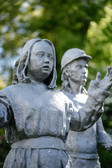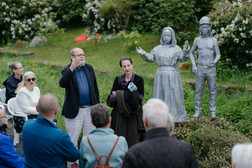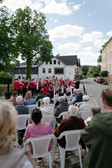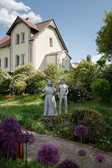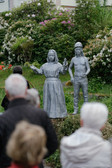Angel + Miner
A new interpretation by Christina Doll
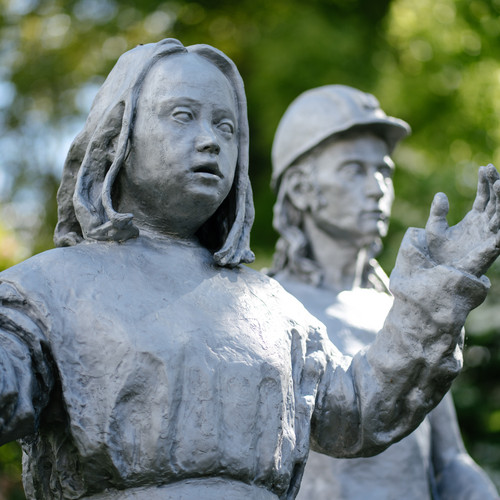
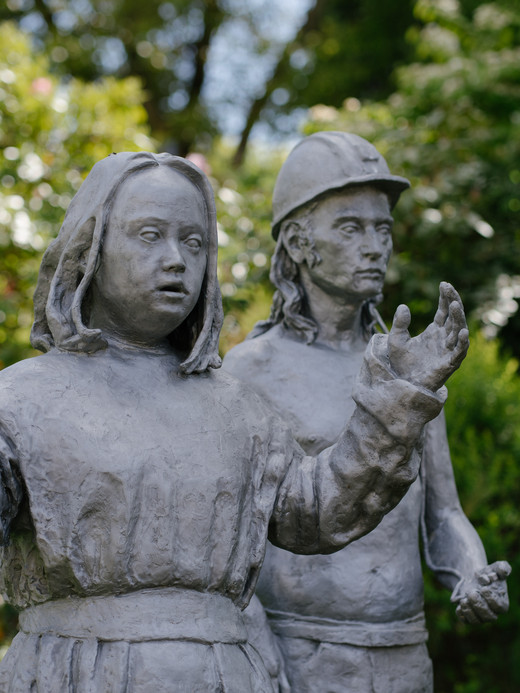
A young girl with outstretched arms and a wide robe stands next to a slender man with a pit helmet, who appears to be offering the viewer a piece of ore. The two figures by Christina Doll are reminiscent of the traditional Erzgebirge motif of angel and miner, which the artist, who was born in Cologne in 1972 and now lives in Berlin, translates into a contemporary visual language. Doll's figures, cast from a variety of materials, refer less to the traditional design methods of Erzgebirge iconography that have been handed down over the centuries. Her angel and miner appear to have been taken from life in terms of their facial features, their furnishings and their form. The artist approaches people through a process of observation, not portraying them, but empathising with their nature, observing their gestures and facial expressions, finding special features and similarities. It is not celebrities or social media identities, but marginalised groups and suppressed narratives that she gives a face and a form in her lifelike, immediate and truthful sculptures, the forcefulness of which breaks through any surface.
"Feelings are stronger than consciousness," is how Doll describes her experience of meeting a group of children with physical and cognitive disabilities. The artist observed them rehearsing the nativity play and translated their gestures, facial features and shape into the figure of an angel. For the miner, the artist researched the history of one of the installation sites, St Wolfgang in Schneeberg, where rich silver deposits were mined alongside tin, iron and copper in the 15th century. Labelled as pitchblende and considered unusable, the ore that shaped Schneeberg between 1946 and 1956 was thrown onto heaps over the centuries: uranium. Operated by the Soviet-German AG Wismut, the ore was mined in the pits of Object 03 in the strictest secrecy, initially also under forced labour and with dramatic consequences for workers, the population and nature, in order to produce fuel rods and nuclear weapons in the Soviet Union. Doll gave the miner's figure the facial features of a Wismut worker based on an old photograph; its figure is reminiscent of Lucas Cranach's depiction of Adam on the Reformation altar in St Wolfgang. With the pair of figures, angel and miner , the artist does not create an idealised depiction, but rather creates a monument to real life, the people, their work and their suffering in a sensitive, almost humble manner.
(Text: Ulrike Pennewitz / Alexander Ochs)
Where?
INAUGURATION on May 24th, 2025 at 3pm.
1 pair in the Bergkirche St. Marien, Annaberg-Buchholz | to location
1 pair at Bergmannsplatz, Hohndorf | location (inauguration on 24 May 2025)
1 pair in the cathedral, Zwickau | to the location
1 pair in St Matthew's Church, Chemnitz | location
1 angel in the town church, Wolkenstein | location
1 miner in the castle, Wolkenstein | location
1 angel in St Wolfgang's Church, Schneeberg | location
